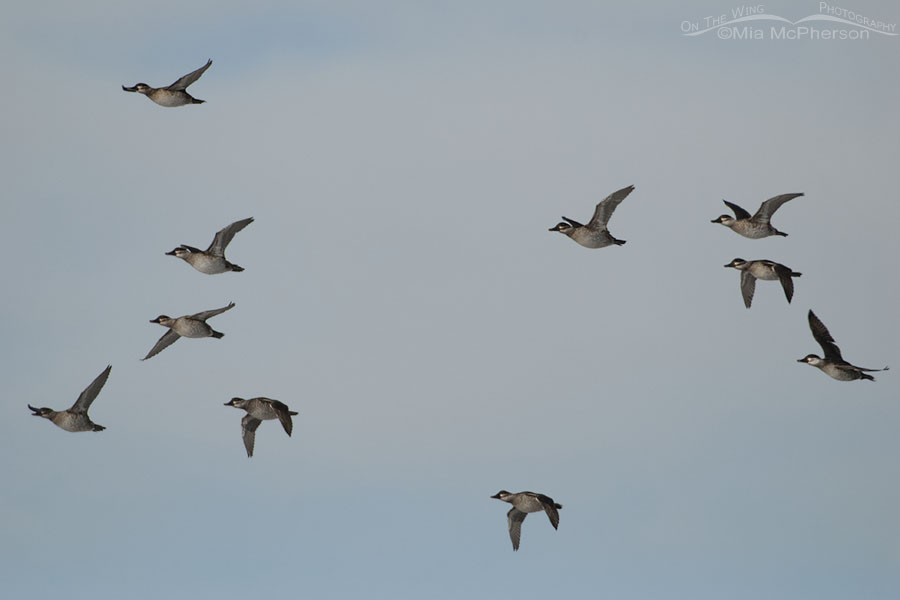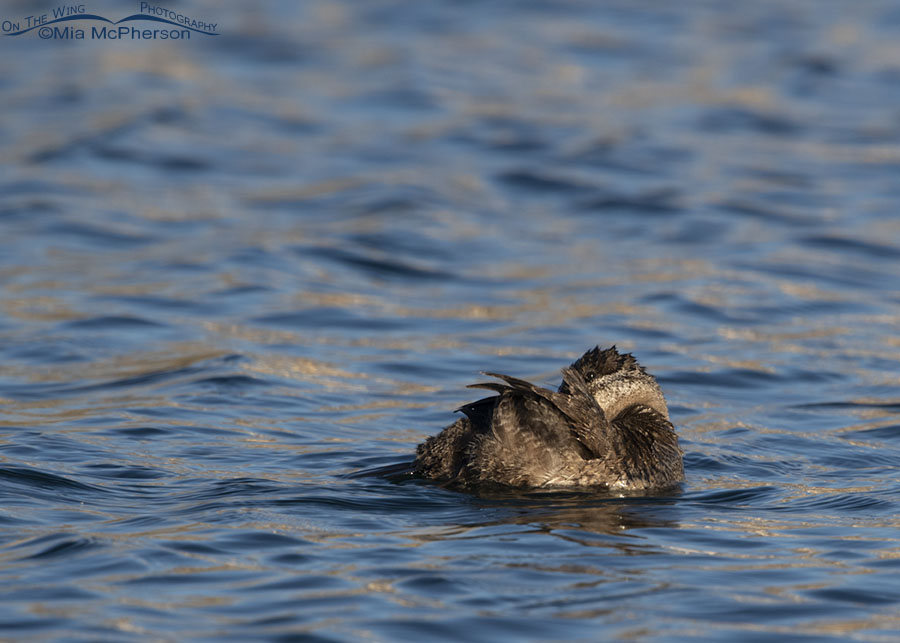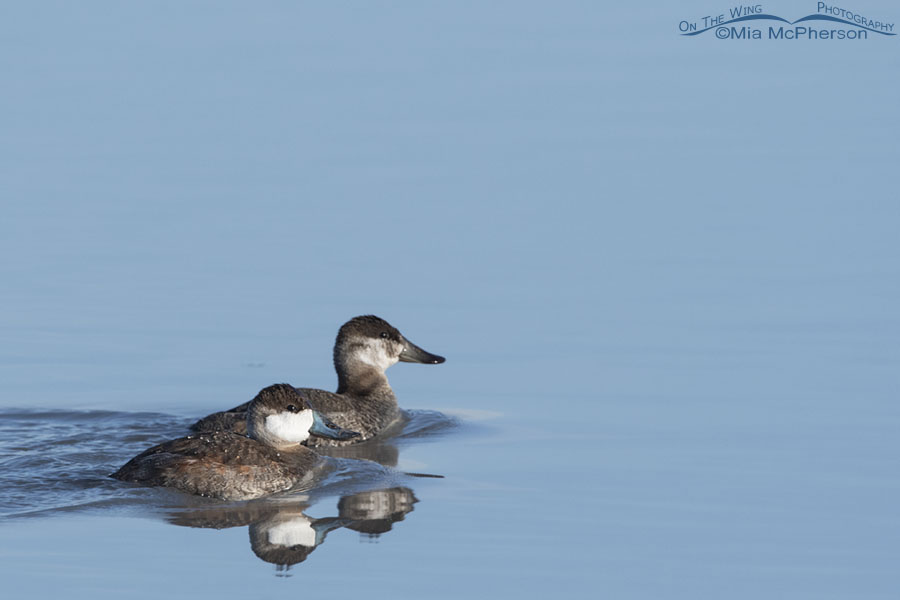 Flock of Ruddy Ducks in flight – Nikon D200, f6.3, 1/3200, ISO 400, +0.3 EV, Nikkor 200-400mm VR with 1.4x TC at 400mm, natural light
Flock of Ruddy Ducks in flight – Nikon D200, f6.3, 1/3200, ISO 400, +0.3 EV, Nikkor 200-400mm VR with 1.4x TC at 400mm, natural light
A few days ago I saw someone say that they rarely saw photos of Ruddy Ducks in flight and I remembered I had a series of them flying past taken 11 years ago. These Ruddy Ducks were photographed on November 25, 2010. It was Thanksgiving Day that year and I was at Farmington Bay WMA looking for birds to photograph. It is kind of a Thanksgiving tradition for me to photograph birds on Thanksgiving Day that started before I even moved to Utah.
Tracking Ruddy Ducks in flight is very challenging because they are small ducks and their flight pattern can be very erratic. The light wasn’t the best when I photographed this flock of Ruddy Ducks flying past me over the marsh but I was happy to take photos of them. Keeping them in my viewfinder and in focus was not an easy feat.
At this time of the year many of the male ducks in North America are in or are molting into their breeding plumage. Drake Ruddy Ducks go into breeding plumage later than most ducks. Usually they start molting into breeding plumage around the beginning of March. I have seen a few drakes starting to get their blue bills earlier than that.
 Preening female Ruddy Duck – Nikon D500, f7.1, 1/1000, ISO 320, -0.7 EV, Nikkor 500mm VR with 1.4x TC, natural light
Preening female Ruddy Duck – Nikon D500, f7.1, 1/1000, ISO 320, -0.7 EV, Nikkor 500mm VR with 1.4x TC, natural light
Female and immature Ruddy Ducks are brown and have a brown streak across their pale cheeks. I photographed this preening female close to home on a bright December evening in 2016. A few of these small ducks show up at ponds close to where I live in Salt Lake County practically every fall and winter. They seem less skittish on those ponds than they are in locations where hunting is allowed.
 Ruddy Duck drake and hen at Bear River MBR – Nikon D500, f7.1, 1/1250, ISO 640, +0.3 EV, Nikkor 500mm VR with 1.4x TC, natural light
Ruddy Duck drake and hen at Bear River MBR – Nikon D500, f7.1, 1/1250, ISO 640, +0.3 EV, Nikkor 500mm VR with 1.4x TC, natural light
This pair of Ruddy Ducks was photographed on calm water at Bear River Migratory Bird Refuge in January of 2018. Most of the water in the wetlands were covered with ice that morning but there were a few open patches on the west side of the auto tour route. The male in front with the bright white cheeks shows a bit of the bright blue that his bill would have changed to in full breeding plumage.
I adore photographing these small diving ducks and wish that I were able to have more opportunities with them in my viewfinder on the water and in flight. I may have to make some changes about the time of day that normally I go out into the field to accomplish that because of light angles on a few bodies of water where I see this species most often. Change can be good though and I am up for it.
Life is good.
Mia
Click here to see more of my Ruddy Duck photos plus facts and information on this species.


I have been seeing a good number of ruddies at FB. One of my favorite ducks to hold. They feel so good, I know many who have the same feeling about holding them.
Yet another beautiful post of birds I do not see. Thank you. Muchly.
Yet another delightful post. Thank you. Muchly.